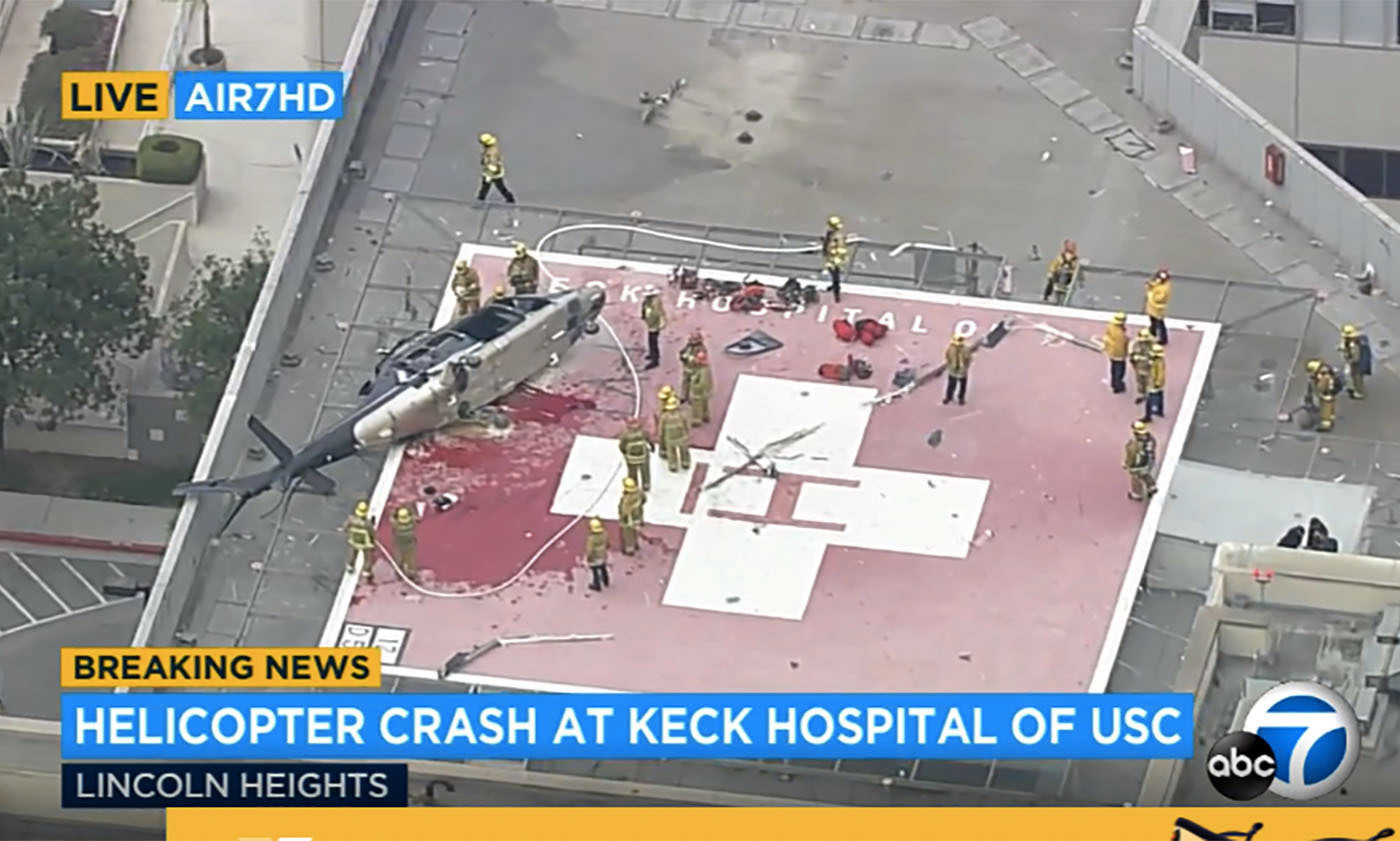An angel at my pad (Keck hospital rooftop crash)
Thread Starter
Join Date: Apr 1998
Location: Mesopotamos
Posts: 5
Likes: 0
Received 0 Likes
on
0 Posts
An angel at my pad (Keck hospital rooftop crash)
Thankfully no injuries and the organ they were transporting was still useable.
Thankfully it didn't fall off the building.
Anyone know how it ended up on its side?
https://www.dailynews.com/2020/11/06...pital-helipad/

Thankfully it didn't fall off the building.
Anyone know how it ended up on its side?
https://www.dailynews.com/2020/11/06...pital-helipad/

Looks like a TR drive failure from the witness video
Avoid imitations
Join Date: Nov 2000
Location: Wandering the FIR and cyberspace often at highly unsociable times
Posts: 14,578
Received 435 Likes
on
229 Posts
I'd agree that looks like a T/R drive failure at the most critical stage of the landing. Looks like a quick and correct response by the pilot, namely by lowering the collective, bearing in mind there was little or no time to shut down the engines. Quite interesting to see how rapidly it rolled!
Glad to hear they all survived.
Glad to hear they all survived.
Sure that this was a TR drive failure? I saw a longer video of the approach and the TR RPM didn't change during final and beginning of the rotation .
skadi
skadi
Is this the same heli type that crashed in Leicester two years ago and if so, could it be the same issue?
Last edited by golfbananajam; 9th Nov 2020 at 15:34. Reason: typos corrected
Avoid imitations
Join Date: Nov 2000
Location: Wandering the FIR and cyberspace often at highly unsociable times
Posts: 14,578
Received 435 Likes
on
229 Posts
Sure that this was a TR drive failure? I saw a longer video of the approach and the TR RPM didn't change during final and beginning of the rotation .
As per the previous post, the aircraft are totally different types (169 versus 109) and their tail rotor control systems are totally different.
Golly, you guys must be subject matter experts on the 109 Series TR Control system to be so sure of what happened.
Avoid imitations
Join Date: Nov 2000
Location: Wandering the FIR and cyberspace often at highly unsociable times
Posts: 14,578
Received 435 Likes
on
229 Posts
One other “gotcha” on this type is that out of the two hydraulic systems, only #1 boosts the yaw servo. If #1 hydraulics drop off line, servo assistance is lost and the pedal feedback forces can be very high. It’s then very difficult to apply enough “boot” to keep the aircraft straight at low speed. The normal way to land in that condition is a running landing at about 30 kts, ideally with a crosswind from the left.
Having carried out a ‘Check A’ on the 109 every working day for the last decade and a half and having over 3,000 hours on type, I do have some idea of how the thing is put together.
One other “gotcha” on this type is that out of the two hydraulic systems, only #1 boosts the yaw servo. If #1 hydraulics drop off line, servo assistance is lost and the pedal feedback forces can be very high. It’s then very difficult to apply enough “boot” to keep the aircraft straight at low speed. The normal way to land in that condition is a running landing at about 30 kts, ideally with a crosswind from the left.
One other “gotcha” on this type is that out of the two hydraulic systems, only #1 boosts the yaw servo. If #1 hydraulics drop off line, servo assistance is lost and the pedal feedback forces can be very high. It’s then very difficult to apply enough “boot” to keep the aircraft straight at low speed. The normal way to land in that condition is a running landing at about 30 kts, ideally with a crosswind from the left.



